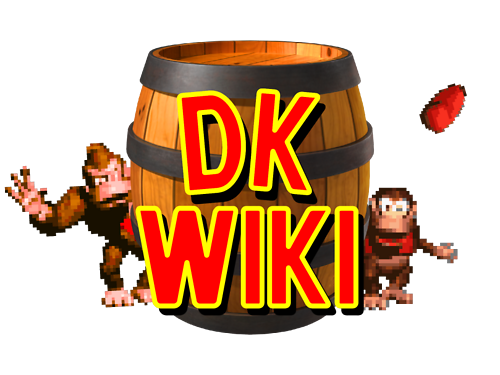- For other uses, see Cranky's Hut
Monkey Museum as seen in Donkey Kong Country 2: Diddy's Kong Quest. | |
| Greater location(s) | Crocodile Isle |
| Inhabitant(s) | Cranky Kong |
| Game(s) | Donkey Kong Country 2: Diddy's Kong Quest |
| First Appearance | Donkey Kong Country 2: Diddy's Kong Quest (for SNES) (1995) |
| Latest Appearance | Donkey Kong Country 2 (for GBA) (2004) |
The Monkey Museum, is a location that Cranky Kong resides in, seen in every world of Donkey Kong Country 2: Diddy's Kong Quest, excluding The Flying Krock. It is a spiritual successor to Cranky's Cabin (to the point where it is assumed the Museum is the interior of it) and works in a very similar way.
Summary[]
The Monkey Museum works in a very similar way to Cranky's Cabin, though it has been made much more convenient. First off, players can now actually choose what information they want to learn about, and most of the tips seem clearer in general. There are now tips available for every level in the current world and some tips are free, though some of the tips require a small one to three Banana Coins payment before hearing. These tips usually help find Bonus Barrels, extra lives, or more bananas and coins. Most of Cranky Kong's humorous ranting this time around is from short entering and leaving comments.
In the Game Boy Advance remake of Donkey Kong Country 2, not much has changed aside from renaming it "Cranky's Hut", a redesign of the cabin, removing references to non-Nintendo owned franchises, and the fact that players can now access the minigame Expresso Racing.
After the ending credits in both games, the museum is also the place where Cranky Kong explains about his Video Game Heroes contest to Diddy and Dixie Kong.
Easter Eggs[]
In the Super Nintendo Entertainment System version of Donkey Kong Country 2, there are several Easter Eggs[1] inside the Monkey Museum, including references to a different game made by Rare.
- Chief Thunder, a character from Rare's fighting game Killer Instinct[2], is on a poster in the background.
- A Killer Instinct arcade cabinet appears to be on sale for two dollars.
- An obscured Donkey Kong statue appears above the arcade cabinet.
- Winky the Frog from the original Donkey Kong Country appears to be on display in a glass box. He appears to be left to rest. The box is on sale for five dollars.
- A golden statue of Expresso the Ostrich is between Winky's glass box and the Killer Instinct arcade cabinet.
- Funky Kong's surfboard from Donkey Kong Country is on the wall in the background.
- A giant red Nintendo logo appears near Funky Kong's surfboard.
- A big SNES controller and some cartridges can be seen on the floor. In the North American version, the controller has lavender colors. In the European version, it has red, blue, yellow and green colors.
- A Kremling's head wearing a hat has been put on display as a hunting prize, much like a deer or moose in real life. It is on sale for three dollars.
- There is a DK logo below the Kremling's head.
- A Rareware logo can also be seen below the DK logo.
- A turned over Mine Cart from Donkey Kong Country is in the bottom left corner in the foreground.
- Bananas and a DK Barrel can also be found.
- A rusty Steel Keg barrel in the foreground is on sale for four dollars.
- Some palm tree leaves from Donkey Kong Country can be seen around the museum.
- There are two crossed swords on display above the museum's exit.
Gallery[]
Trivia[]
- A remix of the theme song of Cranky's Cabin is heard as Diddy Kong or Dixie Kong enters the Monkey Museum.
- Cranky Kong is often shaking and seems to be restraining himself from hurting the Kongs, unlike in Donkey Kong Country where he would do so every few seconds. This was probably done to eliminate any controversies about hurting children.
- Cranky Kong will occasionally ask the Kongs if they have purchased a game called "Cranky Kong Country", which he claims was on sale a year ago (at the time, 1994, when the first Donkey Kong Country was released), and that "he" was the guy who made it so popular, not his grandson, Donkey Kong.
- This is obviously Cranky Kong just trying to take credit for the huge success of Donkey Kong Country. It also seems that he might actually be jealous of its success, which is pretty out of character for the old monkey.





